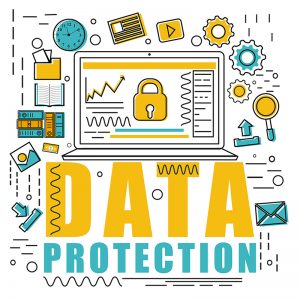Click here to get this post in PDF
 The General Data Protection Regulation (GDPR) is a proclamation under European Union EU) for dealing with information protection and privacy of the people in EU. It points towards all the exported data flow outside the European territory.
The General Data Protection Regulation (GDPR) is a proclamation under European Union EU) for dealing with information protection and privacy of the people in EU. It points towards all the exported data flow outside the European territory.
This term is not everyone’s cup of tea. Yes, we are talking about GDPR (General data protection regulation). If you think your work or business includes a group of people, then you should know about it. GDPR is a tool which keeps the persona (details of a person) safe in an order. It also works as a barrier in between an individual to the other unless permission is taken.
Why is it so much important?
- It covers more detail than prior documents.
- It also helps the marketer to get prior knowledge about the business based outside.
- It also includes a prior consent regarding IN or OUT in the market.
- Whenever a violation of data happens, it needs to be sent to the information commissioner within a timeframe.
- Penalties on violation of rules.
- Many other new points are covered under the Data Protection Act 1998 (DPA).
How to successfully implement it within an organisation?
The best practice for successful implementation of GDPR can only be achieved if every individual within the company understand and follows the new derived policies. The best steps are as follow:
1). Draw Awareness among Individuals in Organisation.
The first step for successful GDPR implementation is to raise awareness at every level of your company. Create log and monitor for the practices, involve in training driving concern to security breaches and their cause and develop a secure environment for your organisation.
Make sure every employee in your organisation clearly understands the impact of the new policies, and they are entirely comfortable with it. If necessary, conduct a proper Cyber Security Training for every employee making them aware of various threats involved in the organisational data.
2). Assign a Data Safety Officer for observation and recognising lack.
GDPR specifies that every organisation (public and private) must designate a data protection officer to monitor the main operations which required a well-arranged inspection of personal or other sensitive information to correlate the data to criminal or other offensive activities.
3). Maintain a data inventory to estimate the risk associated with the collected information.
It also helps to analyse the gap and assumption of risk. When you take a data inventory, the first thing to do is to compare it with the requirements of GDPR. It must include the supplier, customer, individual and vendor. Also, the requirement of the company should be included.
4). Design a milestone to fulfil identified gaps.
Once all these things are done, the roadmap should be drawn which include the change in processes. It will help out in assuming the new changes required and the older ones to re-modify.
5). Monitor, execute, maintain report and comply the upgrades again.
The GDPR needs “security by design” which demands that all the IT experts create compliances in designing the future works for their business which perform data collection, processing or other tasks. Its data protection officer’s responsibility to ensure the system workflow remains effective and up-to-date with GDPR updates or announcements.
What’s next?
Don’t panic, Simply follow the flow:
Start preparing although we all know about the increase in demand and the supply. Ensure all the data which are saved in policies are up to date. Next, check the audit data whether it matches with your current data. Cleaning of all prior data will not be a good idea; better is to modify the data slowly until GDPR is introduced. Also, check whether you have entered into another business in between this time. It will again need to be checked that if it follows the clauses of GDPR.
Until then, keep your focus and be aware about GDPR.
You may also like: Why Businesses Need to Take GDPR Compliance Seriously
